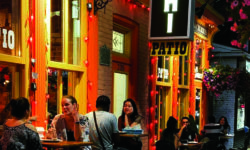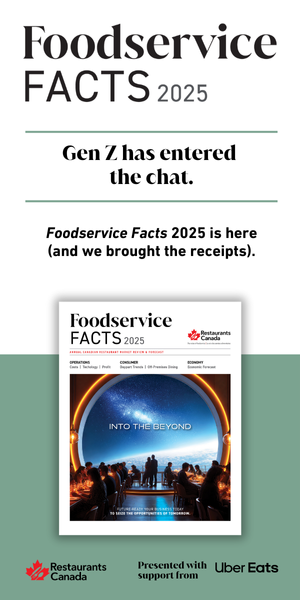PAST AS PROLOGUE
In Conversation with Jeremy Bonia: Sommelier, Restaurateur & Outgoing Chair of the Restaurants Canada Board of Directors
For more than a decade, Jeremy Bonia has stood at the crossroads of hospitality and advocacy, balancing the immediate demands of running restaurants with the broader fight to shape national policy. As he steps down from his extended two-year tenure as Chair of the Restaurants Canada board of directors, Bonia leaves behind a legacy as a steady hand in turbulent times—guiding an industry still in flux as it grapples with yet another wave of economic shocks, from labour shortages and inflation to a trade war with the U.S., adding new layers of political and supply chain pressures.
Restaurants, as Bonia sees them, are more than places to eat. They are the town halls of modern life, where culture, economy, and community quietly converge—until crisis exposes the fragility of it all. The pandemic delivered a gut punch to foodservice, shuttering businesses, upending supply chains, and laying bare the precarious economics of an industry too often taken for granted. As Chair, Bonia led a galvanized board and a newly assertive Restaurants Canada, not just lobbying for survival but fighting for a permanent seat at the table where policies that shape foodservice are made.
Since its beginning, Bonia’s career has been defined by a deep respect for food, wine and the people who serve them. In St. John’s, Newfoundland, he helped build Raymonds into a fine-dining institution, proving that a restaurant on Canada’s easternmost edge could command global attention, from Canada’s 100 Best list to En Route magazine as Canada’s Best New Restaurant—only to see the beloved institution fall casualty to the pandemic. He later co-founded Portage and The Merchant Tavern—more casual but equally ambitious ventures that further cemented his reputation as a leader in Canada’s restaurant scene. Just recently, he stepped away from The Merchant Tavern, marking a new chapter in his
career.
He envisions a more resilient, united, and respected sector—one that shapes cities and communities long before anyone takes notice. And as he steps away from boardrooms and parliamentary meetings, he returns to where it all began: building restaurants, one plate and one bottle of wine at a time.



MENU: After years of shaping restaurant culture—both in the dining room and the boardroom—you’ve stepped away from The Merchant Tavern, Portage, and now the Restaurants Canada board. What’s next for you?
Jeremy Bonia: We sold The Merchant Tavern to our partner in October, and since then, I’ve been in a bit of a free agency period. I’ve been doing some consulting, and I recently partnered with a group as a managing partner at Grotto, a new restaurant here in St. John’s. I’m also working with a few other restaurants in the province, helping them navigate different challenges. It’s been nice, honestly—getting to share what I’ve learned over the years, working with different operations and figuring out how to make things better. I’m really enjoying it.
MENU: Is consulting something you see as a long-term career move, or is it more of a way to reset before deciding on your next venture?
JB: Honestly, it started out of pure boredom. It was my first summer off in a long time, and while that was nice for a while, when fall rolled around, my kids went back to school, and I found myself wondering, “What am I doing?” Then this opportunity came up—I was approached by a group to get involved, and I said, ‘Okay, yeah, I’ll do it’. And I’ve really enjoyed it.
I love the variety—working with different restaurants, solving different problems, getting a fresh challenge every day. With Grotto, I’ve been given a completely blank slate—menu, wine list, staff, everything. That’s exciting. With the other businesses I’m working with, it’s more about fine-tuning—troubleshooting cost overruns, labour challenges, making things more efficient without overhauling what already works.
The best part is getting to go home at night without worrying about whether the dishwasher showed up.
MENU: You’ve spent years advocating for restaurants at the national level. From your perspective, what role do they play in shaping culture, community, and the economy?
JB: Coming from a smaller market like St. John’s—it’s technically a city but still feels like a small town—I see restaurants as more than just businesses. They’re the heart of the community, places where people gather, connect, and build relationships. That’s true across Canada, whether it’s an independent spot or a chain. Walk into a Tim Hortons or an A&W in a small town, and you’ll find the same group of regulars there every morning, treating it like their own town hall. Beyond that, restaurants are huge supporters of their communities. They’re the first to be asked for donations when there’s a kids’ sports fundraiser, a charity event, or even a local family in crisis. The amount of money that flows back into communities through restaurants is massive—96 cents of every dollar spent in a Canadian restaurant stays in Canada. But despite that, we’ve been taken for granted. People don’t always think of restaurants as an industry the way they do manufacturing or tech—it’s just assumed we’ll always be there.
And some of these places have been around forever. They’re institutions. You see it in Toronto, too, with places like Terroni or Canoe, or even a JOEY—they’re landmarks in their own right. Restaurants aren’t just where people eat; they shape cities and communities in ways that often go unnoticed until they’re gone.
MENU: What led you to join the Restaurants Canada board—what convinced you it was worth the commitment?
JB: I think it’s been about ten years now—2015 was my first real involvement. At the time, Brenda O’Reilly was the Newfoundland representative, and when her term was up, she approached me. I was still fairly new to the industry and, while I was already a Restaurants Canada member, I didn’t know much about what the association or the board actually did.
When I attended my first meeting and sat down with people from all over the country—independent operators, CEOs, small business owners—I really got a sense of the issues. The moment that sold me was our trip to Ottawa for Lobby Day on Parliament Hill. Sitting in those meetings, seeing firsthand the influence the organization could have, I thought, ‘This matters. This is something worth being a part of’.
Restaurants Canada has a unique position—we have the weight of the big chains, but also the heart of independent restaurants. And the reality is, whether you own one restaurant or 50, the core issues—labour, costs, government policies—affect everyone. Being on the board has been an incredible learning experience, and the things I’ve learned from the people I’ve met through it have made it even better. It’s been unbelievable.
MENU: You became Chair of the Restaurants Canada board during a turbulent period. Looking beyond the immediate challenges of the pandemic, what lasting changes do you think will define the industry moving forward?
JB: I don’t take credit for any of this, but I do think we’ve come out of the last few years stronger than ever as an organization. That was part of why I stayed on for an extra year—to provide some stability, especially with a brand-new CEO. Kelly came from the board, and I was her mentor there, so we already had a relationship, which made the transition smoother.
The industry is still dealing with so many pressures—taxation issues, tariffs, labour shortages, sustainability—it’s always death by a thousand cuts. But the biggest shift is that Restaurants Canada now has a real seat at the table. In the past, we were always reacting to challenges and government decisions. Now, we’re being contacted before those decisions are made. We’re advising, not just responding—that’s a huge change.
A lot of credit goes to Kelly and the team for making that happen. The board’s role has evolved too—we’re here to support, to act as a brain trust, and to provide guidance so the team can focus on executing their goals. And what they’ve accomplished in just two years has been incredible. The organization is more stable, more influential, and better positioned to advocate for the industry than ever before. All we’ve done is just support Kelly and allow her to build a team and find good people who work well together. They’re really in the thick of it right now, and we just had our board meeting last week and it was great to see the change. There’s a confidence—a swagger about them that comes from finding their stride. And I think that’s only going to grow.
MENU: You were in a uniquely difficult position—advocating for the industry as board member and then Chair while facing your own challenges, including the closure of Raymonds. What was it like trying to balance those roles?
JB: It wasn’t easy wearing both hats. As Chair, my job was to represent the entire industry—independents, chains, multi-units—everyone. I had to separate my own struggles from the broader mission, but at the same time, going through those challenges firsthand made me even more motivated to push for real wins at the national level.
COVID was devastating, and we’re still feeling the aftershocks. The debt load, closures, businesses unable to recover—it hasn’t fully settled yet. Newfoundland had it tough, but Ontario had the longest lockdowns—two years. It’s hard to dwell on personal hardships when the entire industry was suffering. Everyone was in the same boat.
But in a way, being on the board provided perspective. There’s strength in numbers. Whether we were commiserating or sharing solutions, it helped to connect with operators across the country. Sometimes, a policy that worked in one province could be a model for another. It’s often easier to push change at the provincial level than federally, and governments do talk. In the Atlantic, a shift in Nova Scotia will often ripple across to New Brunswick, P.E.I. and Newfoundland. That’s another way Restaurants Canada and its GR team have learned to apply pressure—leveraging what worked in one place and using it
to move the needle for everyone.
MENU: What do you think policymakers and government officials often overlook or undervalue about the restaurant industry’s contribution to culture and the economy?
JB: In the past, I think it came down to a lack of knowledge—just simple ignorance about what restaurants really are. There was this perception that restaurants were just small businesses with minimum wage jobs, not major contributors to local economies. But when you look at the numbers, our industry is massive—one of the largest in the country. There’s a restaurant in every single riding in Canada, often multiple. We employ millions. And when you put the entire foodservice sector together, its economic impact is undeniable.
That’s why the lobbying work has been so important. The team at Restaurants Canada has done a great job making the case with hard facts—showing the numbers, demonstrating the influence, and making people in government take notice. We’re seeing more engagement now and are being invited to committees and consulted on policy decisions. That’s a huge shift, and I think that momentum is only going to grow.
MENU: Balancing your role as Chair of the Restaurants Canada board while managing your own restaurants must have been challenging. Were there any personal principles or ideas that helped you navigate that dual responsibility?
JB: It was easier than it might have been because I stepped into the Chair role after we had already built a strong foundation at The Merchant Tavern and Portage. We’d been at it for a decade, and over the years, we put together a solid team who could run things day-to-day without me needing to be there constantly. That gave me the flexibility to step away when I needed to travel for board meetings or lobbying efforts.
Family support also made a huge difference. When you’re away as much as I was, whether it’s for the board or for business, you need that understanding from home.
Had I taken on the role earlier in my career—say, in the first year of opening Raymonds—I don’t think it would have been possible. Back then, every day was a fight just to keep things running. But with experience, you learn to trust the people around you, delegate, and step back in when needed.
MENU: You studied history before building your career in restaurants. Do you think that background has influenced the way you approach the business?
JB: Absolutely. History, at its core, is about storytelling, and restaurants are no different. That’s what drew me to both. When I was studying, I was fascinated by the narratives of past events, how they shaped people and places. At the same time, I was working in restaurants and getting deeper into wine, and I realized how much history plays into that world as well—the regions, the winemaking families, the generations of tradition behind every bottle.
That perspective carried into Raymonds. The restaurant was in a historical building from 1916, originally the Commercial Cable Telegraph Company—the headquarters for the first transatlantic cable connecting Ireland to North America. That connection to history mattered to us. We leaned into it, naming the restaurant after my dad and Jeremy Charles’ grandfather and designed it in a classic, old-school fine dining style.
More broadly, I think having that historical lens helps me take a long-term view of the industry. Restaurants go through cycles, just like economies do. There have been booms and busts, good years and brutal ones. If you look back at the ‘80s and early ‘90s, you see a lot of the same challenges—recessions, shifting consumer habits, changing labour markets. None of it is new.
That’s why I try not to react too quickly or get caught up in short-term panic. Even in the hardest times, like the pandemic, I remind myself that things do turn around. You have to play the long game in this business.


MENU: Many restaurants, intentionally or not, often play a certain historical role in their communities—preserving foodways, regional identities, architecture and history. How do you see this stewardship aspect of restaurants, and is it particularly prevalent in Newfoundland?
JB: We’ve definitely paid homage to those who came before us. St. John’s had a history of innovative restaurants long before Raymonds opened, but we saw an opportunity to take it further. Newfoundland is the only province in Canada allowed to serve wild game, and from day one, we embraced that—at a time when a lot of restaurants were going in the opposite direction, bringing in product from all over the world instead of celebrating what was here.
There was a time when there wasn’t as much pride in our food or even in the province itself. Newfoundland had long been considered an underdog—economically struggling, sometimes the punchline of a joke. But we saw something different: a place full of incredible people, ingredients and stories that deserved to be recognized.
We were fortunate that Raymonds launched at the right moment. We won Best New Restaurant in Canada, got great press, and had the chance to travel, showcasing Newfoundland on a larger stage. The Anthony Bourdain: Parts Unknown episode brought even more attention, and alongside that, places like Fogo Island Inn and others were also building momentum.
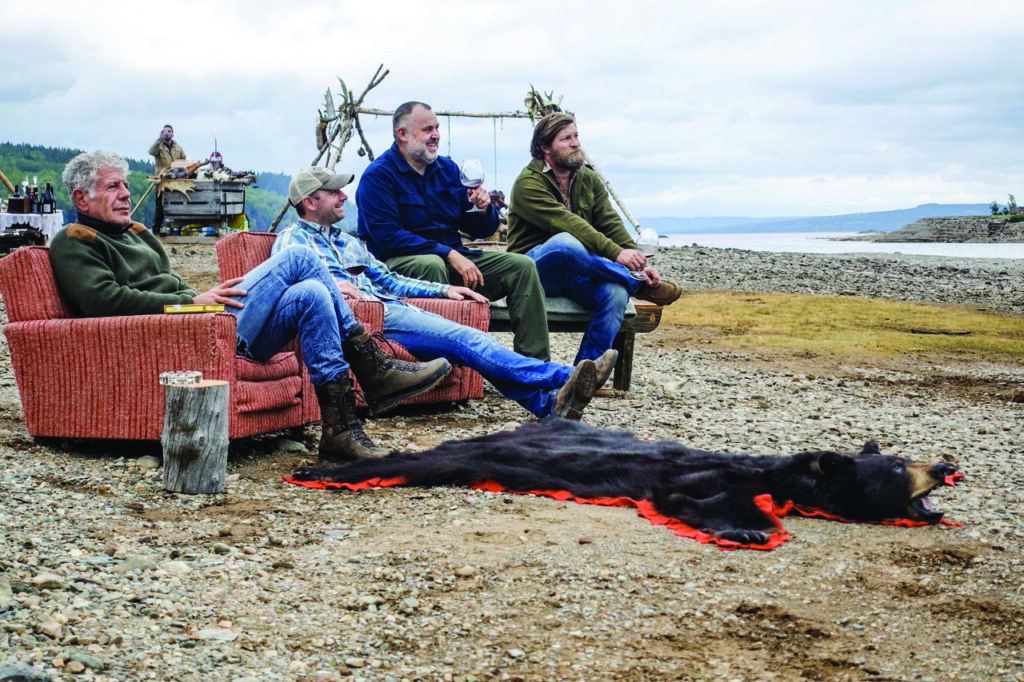
I wouldn’t claim responsibility for any of that on my own though. We all worked together, supporting each other through that shift. And now, it’s exciting to see a new generation of chefs and business owners carrying that forward—people who aren’t just accepting what’s here but really owning it, building on it, and making something amazing in the process. There’s a real sense of pride in Newfoundland food now, and that’s something worth celebrating.
When it comes to architecture and old buildings, just think about how young operators and chefs are often responsible for gentrifying areas of less popular areas of town. Usually, if you’re an independent restaurant owner, you don’t have a whole lot of money when you’re starting up—you can’t afford financial district prices for rent. So where do you go? You go to the outskirts, you find those small, unique or historical buildings wherever you can. You put a restaurant in an older buildings and then you see the growth of other businesses around them. I feel like a lot of times restaurants are some of the leaders in creating new communities outside of established, urban centres.
MENU: Let’s talk about Canadian wine, which is currently enjoying a new domestic spotlight as the ‘Buy Canadian’ movement takes hold. It’s a growing industry, but one that still struggles with its global identity. What’s your perspective on where we stand? What are we doing well, where is there room for growth, and where do you see things heading?
JB: Over the last decade, the quality and reputation of Canadian wine have grown exponentially. But we have to remember—most of our wine regions are still young. A lot of our vineyards are only a generation or two deep, which means the best is yet to come. As those vines mature, the quality will continue to improve.
That said, we’re still shaking off some of the baggage from the past. In the ‘90s, a lot of bulk wine was sold under Canadian labels—cheap international blends boxed up and pushed through the market. It turned a lot of the market off and created a stigma that has taken years to overcome. Now, we’re as good an industry as any other in the world. There are many outstanding wine makers here, producing exceptional wine, Canadians don’t always support their own industry the way other countries do. British Columbia is super supportive of their wine industry—most of the wine lists in Vancouver and Victoria heavily feature local wines and they’re dominant in private wine shops. Ontario, despite having some incredible wineries, hasn’t quite reached that same level of local loyalty. Maybe it’s the larger population or greater access to international wine, but it’s something we could do better, and it is getting better and better. There are a lot of great wineries and independents who have really taken charge of the quality, and you can put it beside any other region in the world.
The diversity of what we can produce is impressive, but not every grape is going to thrive here—its geography and its climate. You won’t get consistent Cabernet Sauvignon in Niagara every year. Once in a while it’s great, but you can’t build your business on it. But Gamay? We can do it as well or better than anybody. Our Pinot Noir is outstanding in good years. Cabernet Franc is probably the heaviest red we can do consistently well, year over year, as well as Chardonnay, Riesling, and Sauvignon Blanc. There’s a lot of innovation in winemaking across the country. New Brunswick and Nova Scotia are doing outstanding sparkling wine and, while they are infants in the industry, their still wines are getting better and better. You don’t see a lot of Quebec wines outside the province, but what they’re doing is unbelievable. There are some truly great offerings and a lot of positives.
Internationally, Canada is gaining traction. There are some great organizations promoting Canadian wine internationally. We’re not just ice wine anymore. It’s a great product, but that’s not all we do. More of our top wineries are exporting, getting placements at big wine shows, and proving that we belong at the table. And there’s a younger generation driving that momentum—people in their 20s and 30s who are engaged, visiting wineries, and excited about Canadian wine. That’s where
the real growth is going to come from.
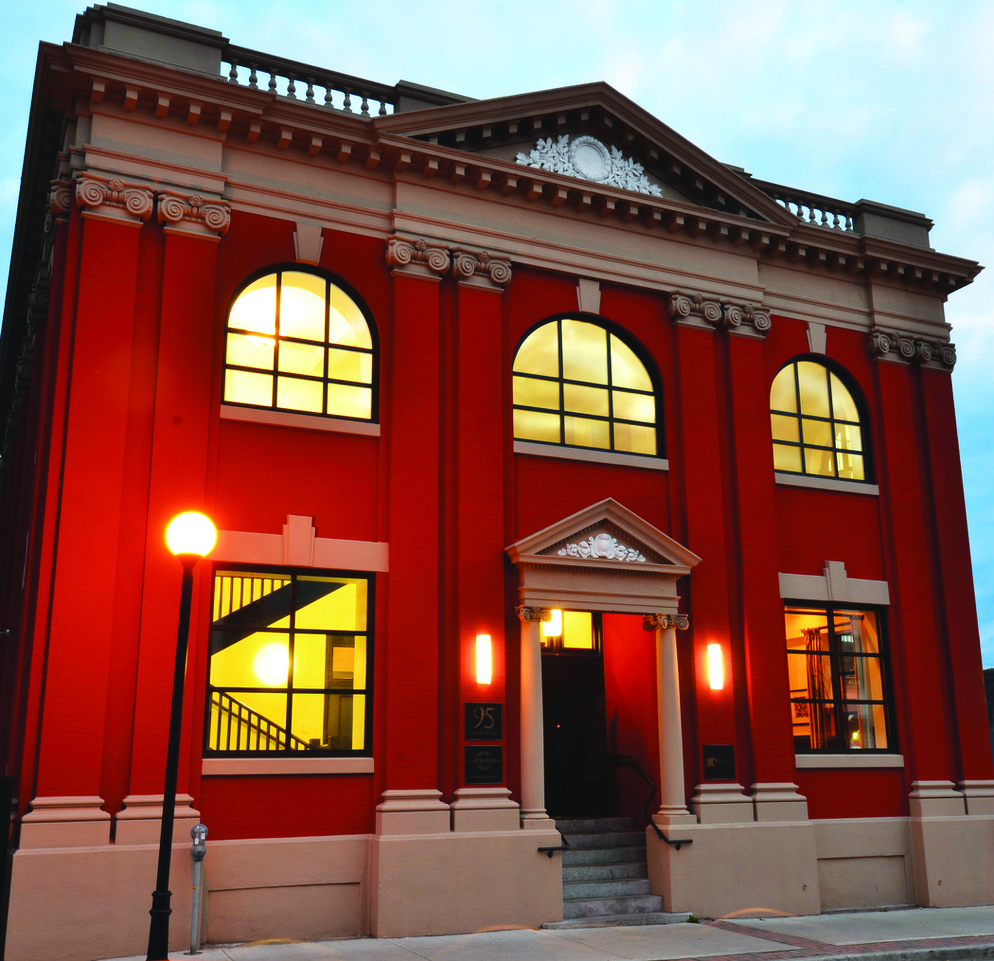
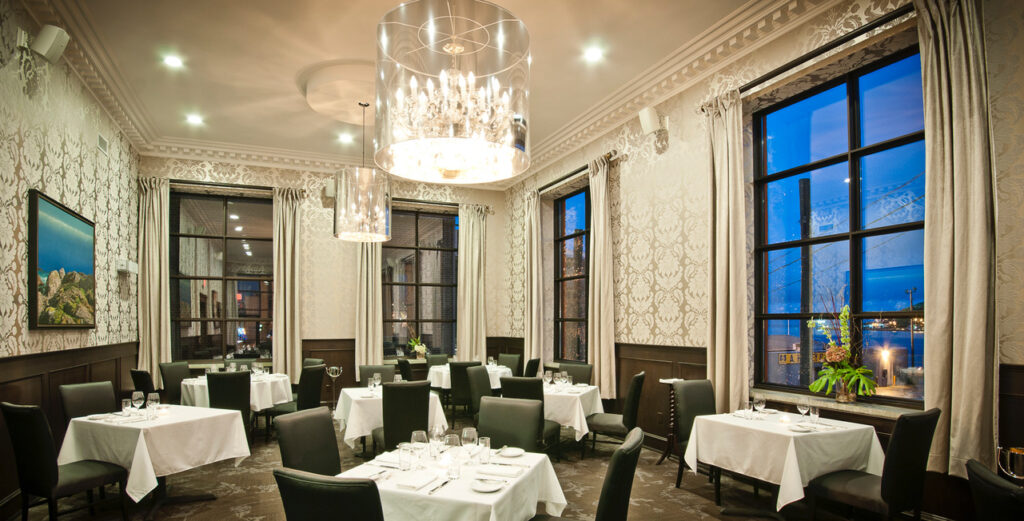
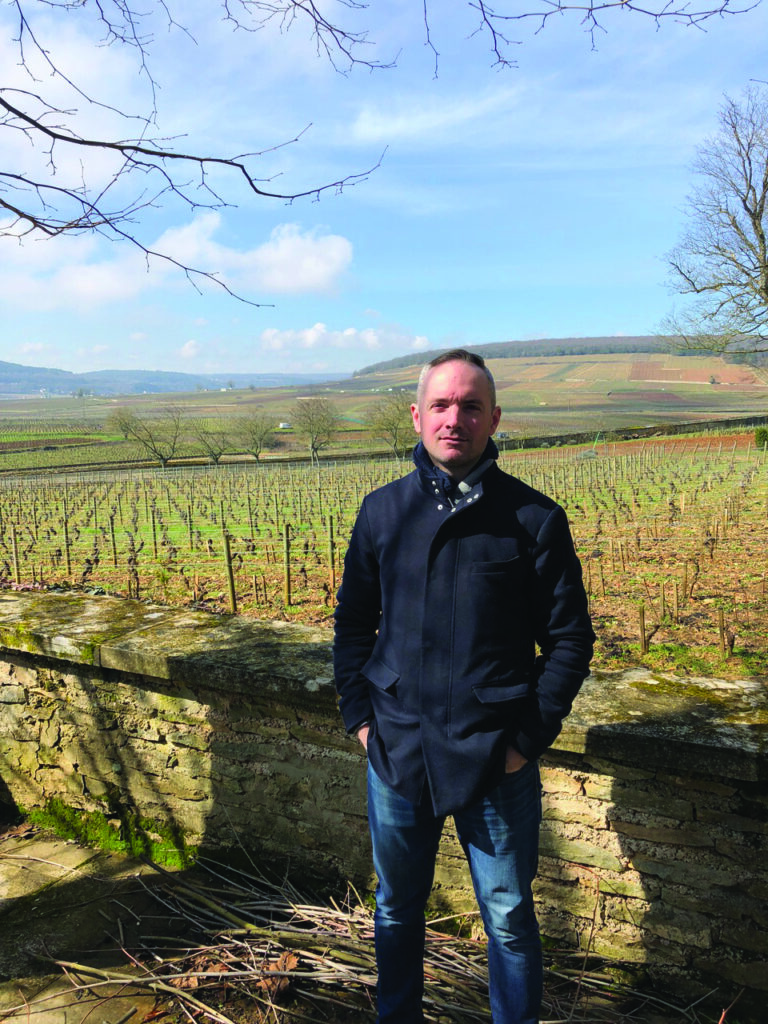
MENU: Beyond wineries themselves, what role do restaurants play in promoting Canadian wine and local products? Should they be doing more?
JB: 100%. Restaurants have always been a critical piece of the puzzle. In a way, they’re the frontline marketers for wine, introducing consumers to labels they might not otherwise find. When you go to a restaurant, order a wine you love, and then seek it out at a liquor store or online, that’s direct influence. Restaurants act as an extension of a winery’s tasting room. A good sommelier isn’t just pouring a glass; they’re telling the story behind the bottle—where it’s from, who made it and what makes it special. That personal connection is powerful. It turns a drink into an experience, and that’s what people remember.
We’ve seen this dynamic play out in cocktail and drink culture, too. The trends often start in restaurants and trickle out into the wider market. Wine is no different. We’re seeing more wine dinners happening across Canada, and more travelling winemakers engaging directly with restaurants. We’ve hosted some ourselves in Newfoundland, and that face-to-face connection between winemaker and diner makes all the difference.
I’d love to see more support for Canadian wines. It’s not about shutting out international bottles—they’re great, too—but when you look at taxation and interprovincial trade barriers, it’s often easier for a restaurant to pour a foreign wine than a great bottle from a Canadian producer. That’s a problem. We need policies that help small, independent wineries get their wines into restaurants without excessive hurdles, because when restaurants champion Canadian wine, consumers follow.
MENU: The cost of Canadian products is often higher than imports, making it challenging for restaurants to prioritize local ingredients and beverages. Do you think policy changes are needed to level the playing field, and what would make it easier for restaurants to champion Canadian producers?
JB: I think restaurants should absolutely support Canadian producers, but the reality is that cost plays a huge role in decision-making. Often, it’s actually more expensive to buy Canadian wine than imports. The cost of production here is significantly higher—making wine in Canada cost far more than producing it in Argentina, for example. But when those bottles hit the market, they’re taxed at the same rate. So, if a restaurant is choosing between a high-quality but more expensive Canadian wine and a more affordable import that allows for a better markup, the financial decision becomes clear.
At Raymonds, we made a commitment to featuring Canadian wines, especially for our house pours. We built relationships with winemakers, supported them as much as we could, and I still promote Canadian wines whenever possible. But the reality is that for many restaurant owners struggling with rising costs, local isn’t always the easiest choice.
I’d love to see more policies in place to support independent wineries, breweries, and distilleries—whether it’s tax breaks, reduced import fees, or streamlined shipping across provinces. If restaurants could purchase Canadian wine more easily, without excessive taxation, it would allow them to showcase local products without taking a financial hit. That kind of support would benefit both producers and restaurants, making it easier to get great Canadian wine on more tables.
MENU: Looking back on your tenure as Chair, is there a particular success or contribution you’re especially proud of? Something you feel you had a direct hand in shaping?
JB: I wouldn’t say there’s any one accomplishment I’d take personal credit for, but if there’s something I’m proud of, it’s the stability we maintained as a board. Supporting Kelly and her team, ensuring we had a unified voice, and being there when they needed us—that was the priority. Whether that meant offering guidance, listening when frustrations ran high, or stepping in when needed, I feel like we created a strong foundation for them to build on.
When I first stepped in as Chair, my very first task was to terminate the previous CEO. That was day one. To go from that moment to where we are now—a strong, cohesive, and highly effective organization—has been incredible to witness. It’s been a period of real stability, and that’s something I take pride in.
MENU: Any regrets?
JB: Maybe that we didn’t make certain changes sooner. But no, no real regrets. I’m going to miss the people, for sure. The board is full of smart, passionate individuals, and I’ve been lucky to work alongside them. I’ll still be around in a past-chair capacity for another year, but I’m also looking forward to what’s next. There’s a great team in place, and I have a lot of confidence in Nicolas Filiatrault as he steps into his leadership. It’s going to be exciting to see where the board and team take things.
MENU: Where do you see opportunities for Restaurants Canada to grow in the future?
JB: It wouldn’t hurt if we had a dedicated minister for our industry—maybe a Minister of Restaurants alongside the Minister of Tourism. I think that’s a real possibility, especially given how much progress the GR team has made. I wouldn’t be surprised if we see something like that sooner rather than later.
Beyond that, I’d love to see a stronger presence in Quebec. It has one of the richest food cultures in the country and plays a major role in shaping Canada’s restaurant scene, especially for independents. It’s such an influential region, and I think there’s a real opportunity for Restaurants Canada to be better represented there.
Jeremy Bonia’s All-Canadian Wine Recommendations
Why look south when some of the world’s best wines are made right here in Canada? Jeremy Bonia shares his top Canadian selections to replace popular U.S. wines on your restaurant’s list—without compromising quality or character.
California Cabernet Sauvignon & Red Blends:
Try BC Meritage (Red Blends) or Cabernet Franc from BC & Ontario for structure, depth, and elegance.
Oregon & California Pinot Noir:
Explore Pinot Noir from BC, Ontario, & Nova Scotia, where cool climates create beautifully expressive,
terroir-driven wines.
U.S. Chardonnay:
Any Canadian Chardonnay—from coast to coast, our winemakers are producing world-class expressions. The same goes for Canadian Sparkling—truly exceptional in every way.
Expand your wine list with these Canadian stand-outs:
Canadian Gamay:
A vibrant, food-friendly red with bright acidity.
Syrah:
A hidden gem, particularly from BC, with bold spice and complexity.
Riesling:
From bone-dry to off-dry, Canada’s Rieslings rival the best in the world.
Sauvignon Blanc:
Crisp and aromatic, offering a fresh alternative.
Viognier:
A lush, aromatic white with beautiful floral notes.
Pinot Gris:
A refreshing, versatile choice perfect for any menu.




